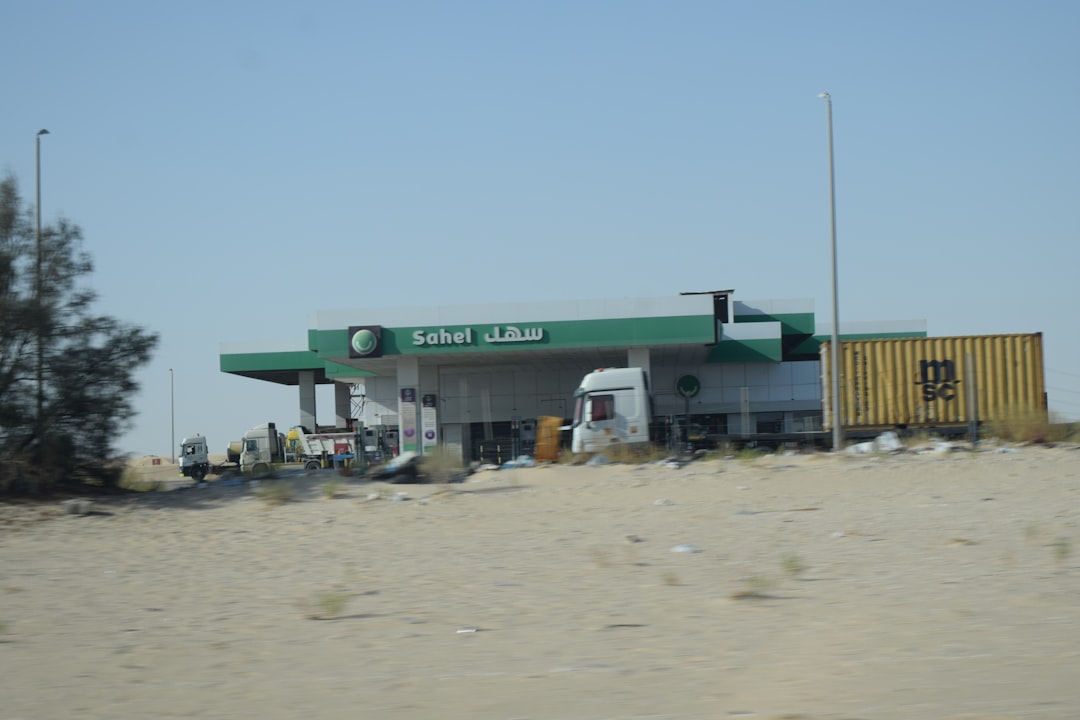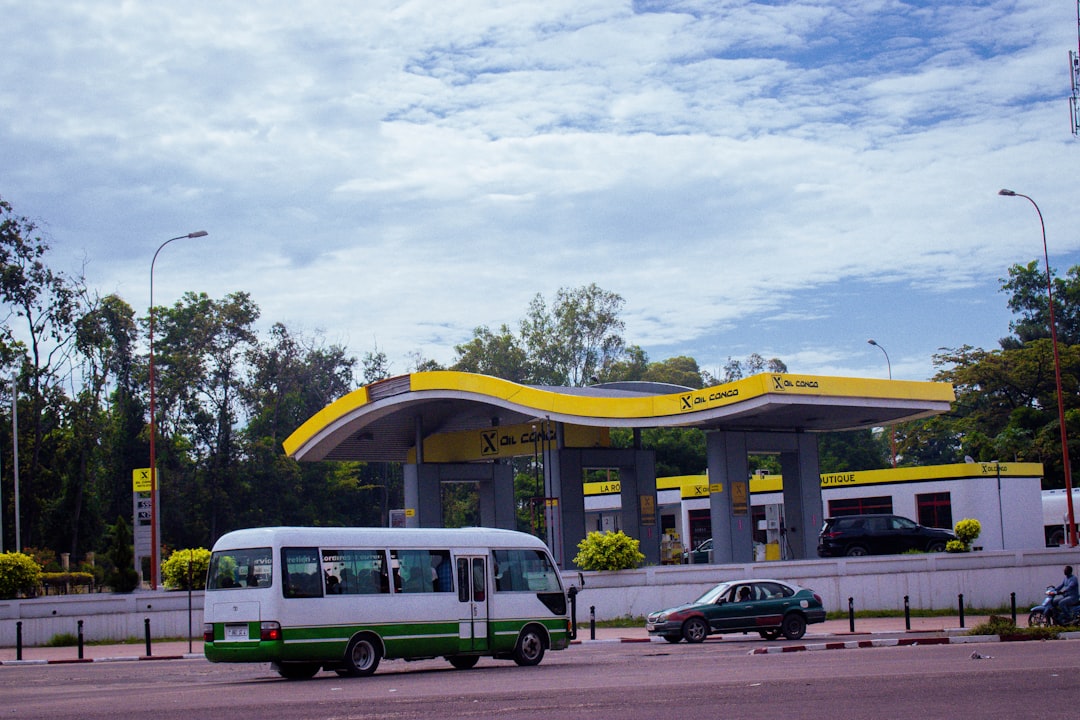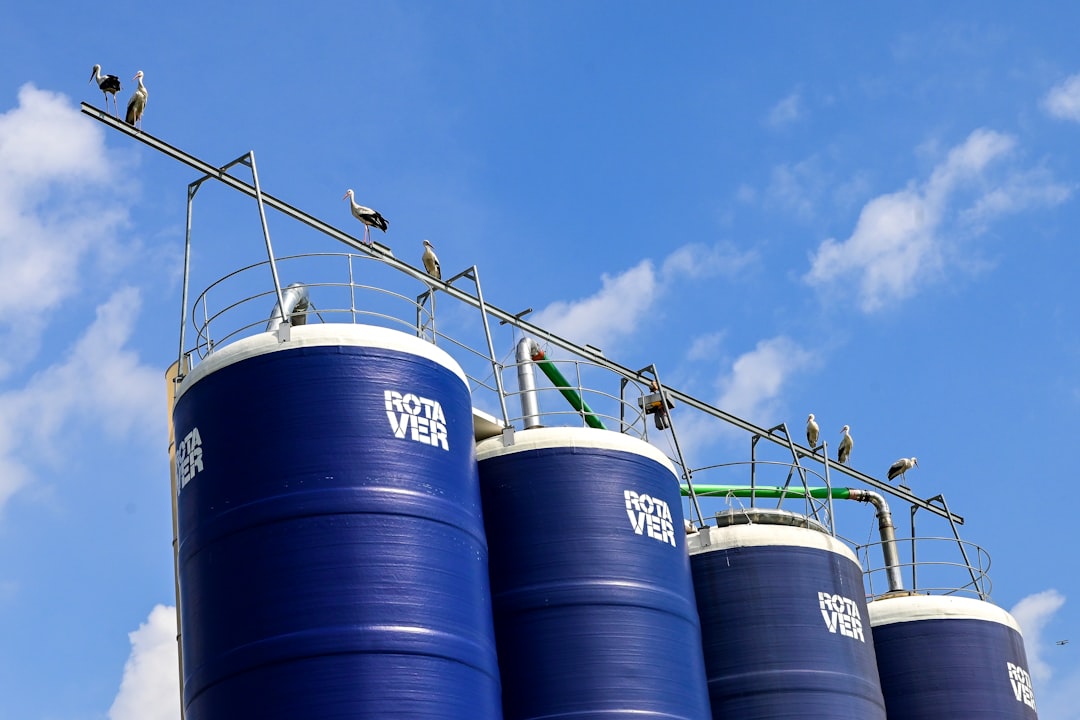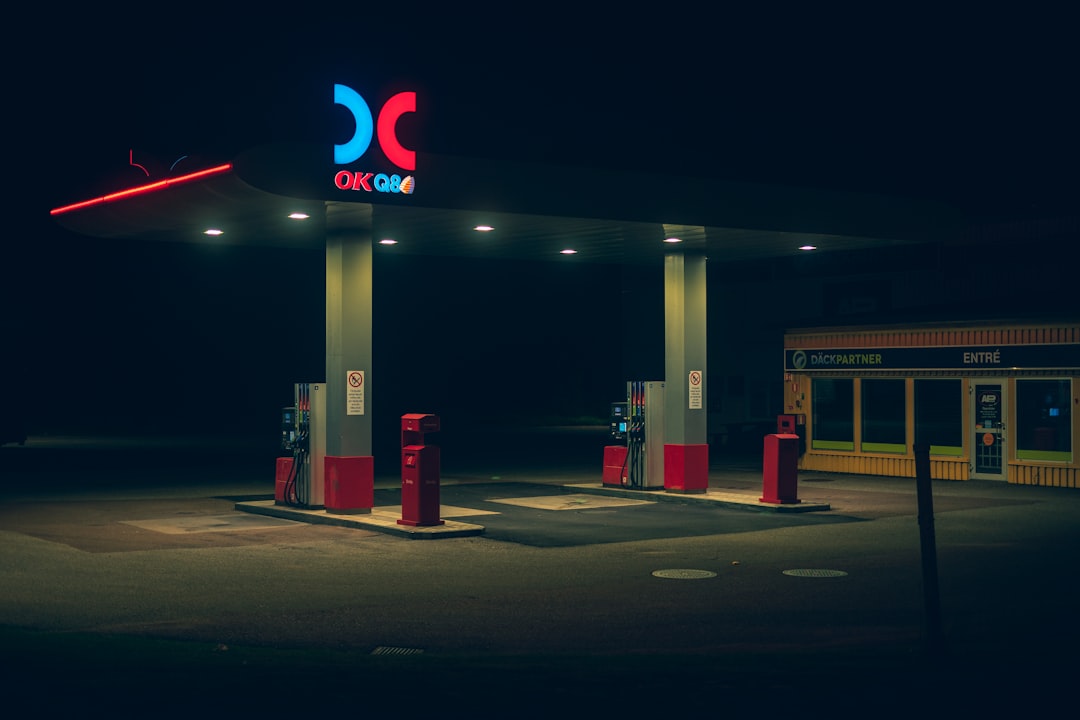

Engage prospects with a scan and streamline customer engagement with FREE QR code marketing tools by Sona – no strings attached!
Create a Free QR CodeFree consultation

No commitment

Engage prospects with a scan and streamline customer engagement with FREE QR code marketing tools by Sona – no strings attached!
Create a Free QR CodeFree consultation

No commitment
Petroleum product distributors are navigating significant shifts driven by digital transformation, sustainability mandates, and evolving customer expectations in the oil and gas supply chain. The pressure to modernize is constant: clients and partners demand better traceability, easier access to technical data, and faster ways to connect physical products with digital resources. Traditional methods such as printed material, static labels, and manual checklists not only create unnecessary friction but also introduce critical blind spots such as missing high-value prospects and failing to surface valuable engagement signals, which can inhibit efforts to remain competitive amid global petroleum product distribution market trends.
QR codes have emerged as an accessible, scalable solution for petroleum product distributors aiming to close persistent physical-to-digital gaps that result in missed opportunities and incomplete data trails, as outlined in Sona QR’s marketing guide. With a single scan, QR codes offer instant access to mission-critical information, automate compliance tasks, and unlock new opportunities for lead generation, asset tracking, and customer engagement at every key touchpoint without adding operational complexity. The shift from static documents to dynamic QR-enabled workflows ensures the right people find the right resources at the right time.
By adopting dynamic, data-rich QR code strategies, distributors can address challenges like anonymous or untracked traffic, incomplete account data, and fragmented workflows. These improvements enhance field operations, ensure regulatory standards are met, and create more personalized, predictable customer experiences throughout the petroleum logistics value chain. The following sections outline proven methods and actionable tactics for using QR codes to enable access, improve efficiency, and build resilient, insight-driven operations that support compliance and growth.

For petroleum product distributors, daily operations often suffer from fragmented communication and lost opportunities due to reliance on paper-based assets and manually updated records. When asset-level or site-specific data is trapped in binders or siloed digital folders, it becomes especially easy for high-value prospects or critical compliance details to go missing. QR codes serve as the connective tissue between tangible assets such as drums, tanks, and packaging and digital workflows, automating access to safety data sheets, maintenance logs, and compliance records in real time so missing or outdated information no longer stalls business outcomes.
QR codes thrive where analog tasks slow people down. Printed SDS binders can be replaced by QR-linked document hubs. Paper inspection forms can be replaced by mobile forms that capture photos, timestamps, and signatures. Static installation manuals can become video playlists. Each scan becomes a data point that attributes engagement to a specific asset, location, and user type, reducing blind spots and making it easier to improve the program over time.
To operationalize QR code campaigns:
For example, replacing printed safety sheets with QR codes linked to a centralized compliance library ensures every scan is logged, engagement is attributed to the right account, and all parties access the most current information. Platforms such as Sona QR’s product overview let petroleum product distributors automate these workflows and route scan data to CRM systems or retargeting tools. The result is a closed loop between physical operations and digital engagement that saves time, reduces risk, and supports growth.

Many in the petroleum industry face missed sales, compliance lapses, and disengaged customers due to hard-to-trace physical processes and disconnected communication channels. Operational blind spots such as not knowing which clients interacted with which resources or failing to personalize outreach based on real engagement lead to wasted effort and lost revenue. QR codes help eliminate these gaps by tying every physical touchpoint to a measurable digital action.
QR codes address these pain points by:
In practical terms, a QR-enabled delivery receipt can capture a customer’s signature, time, and GPS coordinates in a single workflow. A QR on a drum can gate technical bulletins behind a quick form that syncs contacts to the CRM. A QR on terminal signage can streamline contractor check-ins with safety confirmations and time-stamped logs. Each example makes the interaction traceable, auditable, and actionable.

Failure to select the right QR format or management approach can limit program effectiveness and make it challenging to scale or track results. Petroleum distributors benefit most from a mix of formats that map to operational and customer touchpoints, along with a centralized platform to manage updates and analytics.
Dynamic QR codes offer major advantages for petroleum use cases. They allow updates to destinations post-deployment, centralize activity data, and reduce the risk of outdated messaging or duplicated records. For high-volume operations, a platform like Sona QR supports bulk generation, campaign tagging, and automated routing so every scan is captured, enriched, and shared with downstream systems.

Many distributors rely on legacy methods or generic digital initiatives, which leads to missed engagement at high-traffic or critical control points. QR codes provide a practical way to modernize the distribution process and transform everyday surfaces into measurable, value-generating touchpoints.
By prioritizing placements where documentation is often lost, where anonymous traffic blunts insight, and where manual processes slow teams, distributors can convert routine moments into structured data and proactive service opportunities.

Recurring issues around incomplete account data, siloed engagement, and delayed service requests can be addressed through a strategic deployment of QR codes. The most effective programs align use cases to common workflows and measure outcomes at each step.
Each of these applications turns a passive surface into an active touchpoint. When powered by dynamic links and a platform such as Sona QR, the program scales across products, regions, and teams with consistent tracking and controllable content.
Traditional retargeting in the petroleum sector struggles to separate high-fit leads from general website visitors. QR scans provide direct Essential Guide to Intent Data because they occur in context: at a depot, on packaging, or during delivery. By assigning unique QR codes to different placements and actions, you can build audience segments that reflect real behavior and lifecycle stage.
Start by mapping the journey from awareness to conversion. Awareness might include trade show interactions or industry publications. Consideration includes downloads of technical bulletins and case studies. Conversion includes delivery confirmations, quote requests, and maintenance bookings. Each stage gets unique codes and tailored follow-up flows. For more examples, browse the use case library.
With Sona QR, every code becomes a smart entry point into your data model. You can map scans to buyer journeys, unify events with website and email activity, and target follow-ups based on concrete actions. The result is less guesswork and more efficient use of sales and marketing resources.
Disconnected campaigns lead to inconsistent messaging, wasted budget, and weaker engagement. QR codes serve as the connective layer across offline and online channels, making every touchpoint measurable and repeatable. When distributors embed QR codes into their marketing and operations, they create a seamless flow of data and action.
Practical integrations include:
A centralized platform like Sona QR lets you manage code creation, campaign tagging, and analytics. You can compare performance across channels, run A/B tests on landing pages and CTAs, and sync data with your CRM so no engagement signal goes unclaimed.
Launching a QR program is straightforward when you align each decision with a specific business outcome. Start with one or two high-impact workflows, then scale based on results and feedback from the field. The following checklist organizes the work into digestible steps for operations leaders, marketers, and sales teams.
Before you begin, secure input from cross-functional stakeholders. Customer service can identify repeat questions that warrant self-service resources. Operations can highlight delays that stem from missing documentation. Sales can pinpoint where leads drop off after events or site visits. Build your QR roadmap around these real-world pain points.
Identify a single, high-friction process where QR can remove steps and add visibility. Typical candidates include SDS access on containers, proof of delivery on receipts, contractor check-in at terminals, or maintenance logging on tanks and pumps.
Align your use case with a measurable objective. For example, Reduce delivery disputes by 30 percent in 90 days or Decrease tech support calls about product compatibility by 25 percent. Clear goals simplify prioritization and make success undeniable.
Decide whether static or dynamic QR codes are appropriate. Static codes point to unchanging destinations like a product PDF. Dynamic codes support editing the destination, adding UTM parameters, and gathering analytics. Dynamic is recommended for most operational uses where updates and tracking matter.
Choose a format that fits the action. Web links are ideal for hubs and videos. Forms are best for confirmations and reports. vCards are perfect for sales teams at events. App download codes simplify rolling out tools to drivers and contractors.
Design your QR with scannability and brand clarity in mind. Use sufficient contrast and a quiet zone around the code. Add a short, benefit-led call-to-action near the code such as Scan for SDS or Scan to Confirm Delivery. Include your logo or a simple frame to reinforce brand trust.
Test across real conditions: different lighting, angles, and devices. Try scanning from a distance on large signage and up close on labels that may get scuffed. Validate that the destination is mobile-friendly, loads quickly on weak networks, and works for gloves-on usage when possible.
Roll out to placements where missing documentation or lost engagement is costly. Prioritize shipment documents, asset packaging, depot entry points, fleet vehicles, and trade event materials. Start with a pilot group to validate user behavior and gather feedback.
Document a simple playbook that includes where to place the code, how large it should be, and what supporting language to use. Train internal teams and partner staff on the purpose, so they promote scanning and can answer basic questions.
Instrument your campaign with analytics from day one. Use a dashboard to monitor scans by asset, location, and channel. Track completion rates on forms, time on page, and downstream actions like quote requests or reorder forms submitted.
Run A/B tests on call-to-action language, landing pages, and code placement. Share learnings with stakeholders and expand to additional use cases once the first campaign shows measurable improvement. With a platform like Sona QR, you can manage all codes centrally, refine targeting based on performance, and sync data into CRM for closed-loop reporting.
Demonstrating ROI from physical-to-digital initiatives is often difficult. The key is to connect scans to outcomes along the entire journey. When you capture detailed scan data and integrate it with your CRM and analytics stack, you can attribute revenue and cost savings to specific placements and messages.
A robust analytics approach includes what, where, when, and who. What was scanned: a drum label, a delivery receipt, or a depot poster. Where it occurred: specific depot or customer site. When it happened: time of day and cadence over time. Who engaged: roles inferred from content accessed or forms submitted. These details transform scans into insights you can act on.
Sona QR and Sona.com help distributors go beyond basic scan counts. Sona QR tracks the full context of engagement and pushes data to your CRM. Sona.com enables identity resolution and multi-touch attribution so you can connect anonymous scans to known buyers and quantify influence on pipeline and closed revenue. With this end-to-end view, QR programs move from nice-to-have to essential components of your performance and operations strategy.
The most successful QR programs combine smart placements, clear messaging, and automated follow-ups. Use these best practices to maximize scan rates and convert engagement into measurable outcomes.
Adopting QR code technology positions petroleum product distributors to tackle persistent pain points such as missing high-value prospects, incomplete account data, and disengaged audiences while building a more resilient, insight-driven supply chain. From improved compliance and customer access to smarter resource allocation and fully traceable engagement, measurable value is unlocked across every operational layer. Begin by mapping critical workflows to QR-powered touchpoints, focus on data-driven outcomes, and prioritize tools that ensure visibility and responsiveness at scale. With platforms like Sona QR, you can generate and track your first codes in minutes, unify offline and online journeys, and connect scans to revenue through Sona.com. Start creating QR codes for free.
QR codes have revolutionized petroleum product distributors by transforming traditional supply chain interactions into seamless, data-driven access points. From streamlining inventory checks and enabling instant access to product information, to enhancing customer trust and operational efficiency, QR codes replace outdated processes with real-time, mobile-friendly solutions that drive measurable outcomes. Imagine instantly verifying product authenticity or tracking deliveries with a simple scan—empowering your team and customers alike.
With Sona QR, you gain the power to create dynamic, trackable QR codes that update instantly without costly reprints, turning every scan into actionable insights connected directly to your business goals. Whether it’s improving logistics, boosting customer confidence, or accelerating order processing, Sona QR helps you unlock new levels of transparency and control in your operations.
Start for free with Sona QR today and transform how your petroleum product distribution business accesses, manages, and grows through smarter, more connected engagement.
Petroleum product distributors use QR codes to connect physical assets like drums and packaging with digital workflows, enabling instant access to safety data sheets, compliance records, and maintenance logs, which automates tasks, reduces manual errors, and captures valuable engagement data.
QR codes close offline-to-online gaps, reduce friction in accessing technical information, provide dynamic content that can be updated centrally, offer full trackability of user engagement, and maximize ROI by attributing conversions to specific physical touchpoints.
They can place QR codes on packaging, depot signage, and delivery documents to automate access to compliance materials, enable secure contractor check-ins with time-stamped logs, and provide secure Wi-Fi access, all while capturing audit trails and ensuring up-to-date information.
While the article does not specify exact regulatory requirements, it highlights that QR codes help meet compliance standards by linking to real-time safety data sheets, batch certificates, and quality control records, thereby reducing audit failures and compliance risks.
QR codes on packaging provide consumers immediate access to product specifications, safety information, and technical support, increasing confidence, enabling easier reorder processes, and turning passive packaging into interactive, measurable engagement points.
Use Sona QR's trackable codes to improve customer acquisition and engagement today.
Create Your FREE Trackable QR Code in SecondsJoin results-focused teams combining Sona Platform automation with advanced Google Ads strategies to scale lead generation

Connect your existing CRM

Free Account Enrichment

No setup fees
No commitment required

Free consultation

Get a custom Google Ads roadmap for your business






Launch campaigns that generate qualified leads in 30 days or less.
